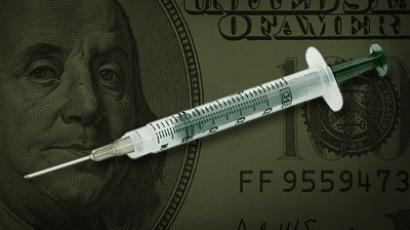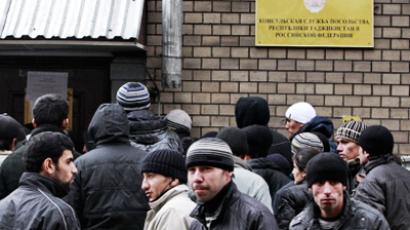Afghanistan – the global narcotics train
A US-based study has revealed even newborns in Afghanistan have morphine in their blood. Every year the production of opiates is growing, despite the billions of dollars spent by the international community to fight the country’s narcotics machine.
Heroin and opium are openly used even in the center of Kabul, while NATO says stopping all this is simply not its goal. I have to admit we thought Kabul would be rough, but what we witnessed there spread far beyond all expectations. With its combination of devastating living conditions, poor infrastructure and depressive atmosphere, Kabul made Benghazi feel like a tropical resort.They say back in the day Kabul was a beautiful, rich city with golden domes of mosques, green parks and alleys all around. But the next three decades of violence have surely left their scars. And if during the Soviet presence the city received new roads, schools, hospitals and apartment buildings, today, with the alliance, it seems Kabul is stuck in its own dimension.
All government buildings and foreign embassies we saw on our way from the airport were guarded by concrete fort-like walls, barbed wire and armored vehicles. Terror attacks here have become so common that the locals have lost count and, perhaps, are even starting to stop paying attention to them all together. Traffic on the streets is an intense combination of chaotic driving and extreme road conditions when buses, cars, motorbikes, bicycles and mules are in a constant fight to push through.
There are shops and cafes but Americans and Europeans are strongly advised to avoid any temptation to take a peek inside.
A pregnant German woman was kidnapped from a café right across the street from the Russian Embassy around a month ago. The only thing that saved her was the traffic – police and security forces were able to find her because the kidnappers’ car got stuck in a jam.Afghanistan is a Muslim republic with a very traditional society, so any sale of alcohol is strongly prohibited. We were told if someone is caught drinking beer, the punishment is sixty lashes on the back. That’s why the picture we saw at the bridge across the Kabul River didn’t only puzzle us – we were shocked. Surrounded by piles of rubbish, waste, rotten meat and an indescribable stench, dozens of men of different ages were fixing up hits, shooting up heroin, smoking opium and marijuana right there in the shadows of the bridge’s concrete body. And not one police officer anywhere near.
Around a hundred people gathered on top and near the bridge covering their noses and staring at the junkies. One of the locals told us they were refugees from Pakistan and Iran and this bridge was their only shelter. But for some reason, we had a hunch these people were not only foreign refugees.According to a study commissioned by the US State Department, all young Afghanis are affected by drugs in one way or another. Each family is thought to have at least one opium smoker. An incredibly pungent substance, the smoke is easily absorbed by clothes, curtains and blankets. Drugs are even found in breast milk and all kids in Afghanistan, even newborns, have morphine in their blood.NATO troops have been in the country for nearly ten years now. But the production of drugs has only increased, jumping from around five hundred tons to over eight thousand tons annually. Opiates are exported into Central Asia, Eastern and Western Europe, Africa and the rest of the world. According to Interpol, the market’s global trade turnover has long surpassed the $500 billion mark.
Russia is one of the worst-affected countries with around eighty tons of heroin thought to annually “settle” in the country. Opiates are smuggled north through Afghanistan’s border with the former Soviet republic of Tajikistan and then into Russia. This is known as the Northern Route.According to Viktor Ivanov, the head of Russia’s Federal Drug Control Agency, the international community annually allocates billions of dollars to fight drug production in Afghanistan. But the money makes little improvements if any at all: “NATO’s mission in Afghanistan is legally incompetent to control these funds. So there’s no co-ordination and, thus, no positive result. Even piracy is now considered a threat to humanity. Why is this not? The UN Security Council must grade it the same. This would give the green light to use real force, the military, to fight this cancer.” Last week Viktor Ivanov added that he had personally spoken with the chairman of the NATO Military Committee, Admiral Giampaolo di Paola, who told him combating drug production in Afghanistan is not the goal and no such directive has been given to the troops. Meanwhile, the Lisbon concept, which outlines NATO’s strategy in Afghanistan, only mentions the problem of drug production. Many experts find this a bit strange, given the fact that a large part of drug money revenues is used to sponsor the Taliban.Life in Kabul is as far from that in Brussels or Washington as Afghanistan itself is from a space trip to the Moon.
Having been surrounded by scores of junkies back at the bridge, our two bodyguards soon realized even their assault rifles may not help protect us so we were ordered back to our bus. And as we walked through piles of rubbish, sand and waste we now became surrounded by children begging for change. Their future is as unclear as ever.
Egor Piskunov, RT














